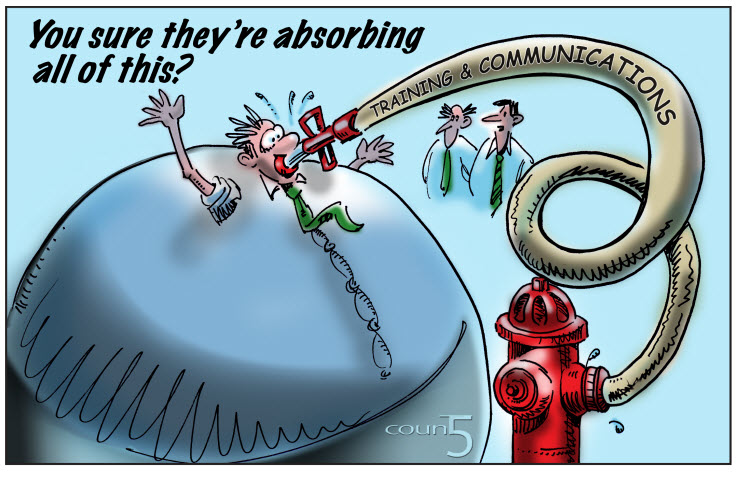Training Reinforcement Answers from the Training Reinforcement Leader

Do you have training reinforcement questions? We've got the answers.
Training reinforcement can have a dramatic improvement on workplace performance. Everyone knows that. While training reinforcement sounds easy, learning professionals have questions on how to best implement training reinforcement programs and on training reinforcement best practices.
Here are the tops facts you need to know about Training Reinforcement
- Why is Training Reinforcement Important? Studies prove without training reinforcement, employees forget between 50% and 80% of their training. Training’s purpose is to empower people with the knowledge and skills required to perform their jobs better. They will never reach their full performance potential unless something is done to disrupt their forgetting curve.
- What should Training Reinforcement focus on? While training reinforcement should reinforce core knowledge from your training, don’t make the mistake of confusing reinforcement with retraining. Most of your reinforcement should focus on learning application. Employees already went through the training, right? Improve user confidence on how, when and why to apply what they’ve learned.
- What kind of content should I use for reinforcement? Short video’s, best practice tips and reminders are helpful. However, you should focus more on situational quiz and challenge questions. Quiz questions should describe a situation, then ask the learner what they should say or do next. After they respond, provide them with contextual feedback to further leverage the learning situation. Challenge questions, unlike quiz questions, have no right and wrong answers. Challenge questions get the learners thinking more about a topic and more about learning application. Challenge questions begin with phrases like
In your experience...?
andHow do you imagine applying...?
This provides a necessary disruption to answering quiz questions by focusing the learner on how the topic applies to their world. Retrieval practice like this, particularly when spaced over recurring intervals, has a dramatic impact on learning retention and training outcomes. - What do you mean by contextual feedback to quiz questions? When a learner is answering a quiz question, the feedback must provide the necessary context the learner needs to move forward. Memorizing answers does not change behavior. When authoring feedback, always answer the three WHAT’s
- WHAT? What is it you want me to say, do or know?
- SO WHAT? Why do I need to know this? What’s in it for me? Why is this important?
- NOW WHAT? OK, I understand what it is and why it is important. Give me a call to action on when, why and how I should apply this on the job.
Best practices on training reinforcement frequency and learning intervention duration differ based on the complexity and importance of the topics being covered.
count5, founded in 2004, was the first company to release software specifically designed to give companies a measurable, automated reinforcement strategy. Designed from the ground-up to disrupt training's forgetting curve, the q.MINDshare adaptive microlearning platform has driven better training outcomes for many of the world’s leading companies.
Implementing these proven tactics, however, can be very hard for limited L&D resources.
q.MINDshare makes it easy. Learn more.
